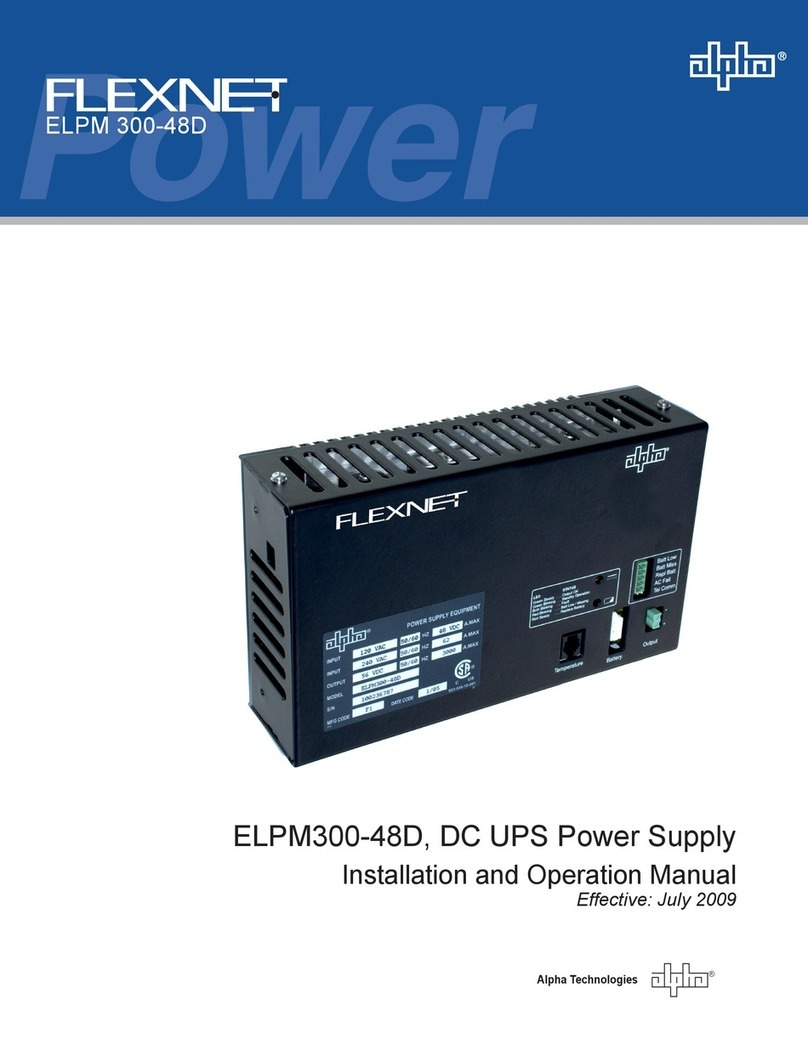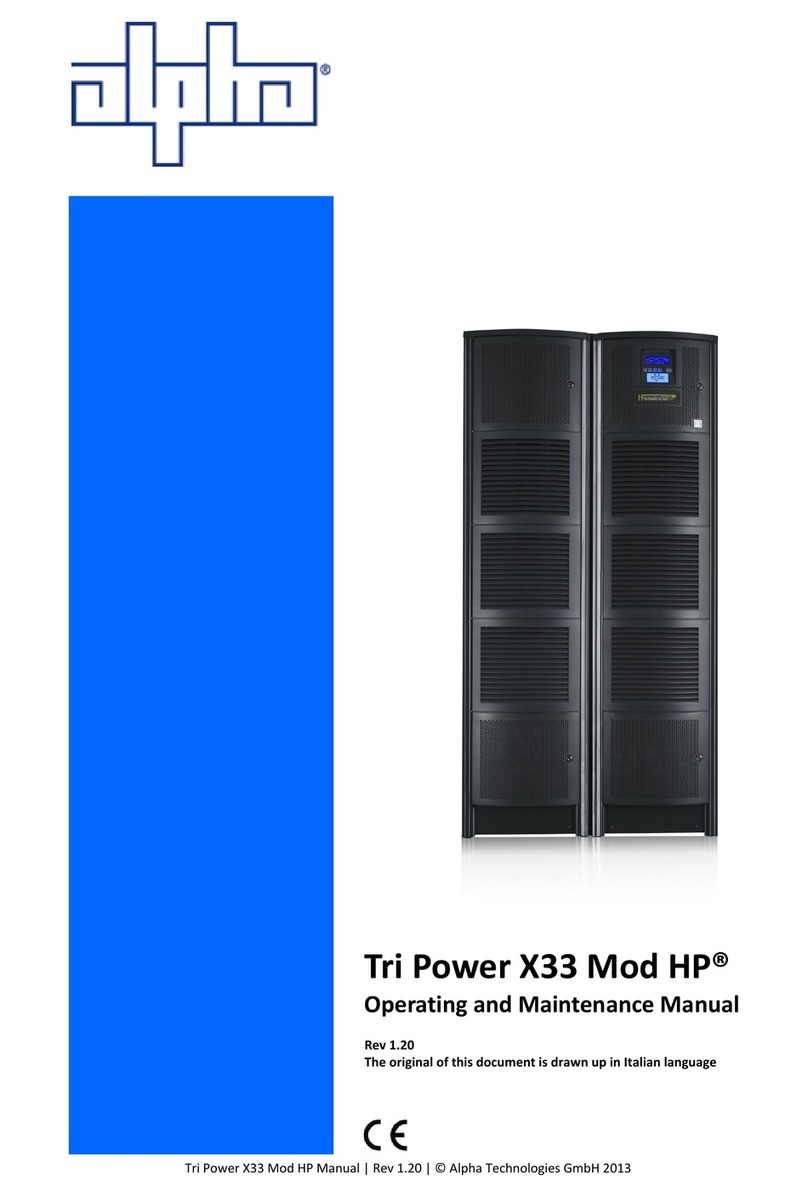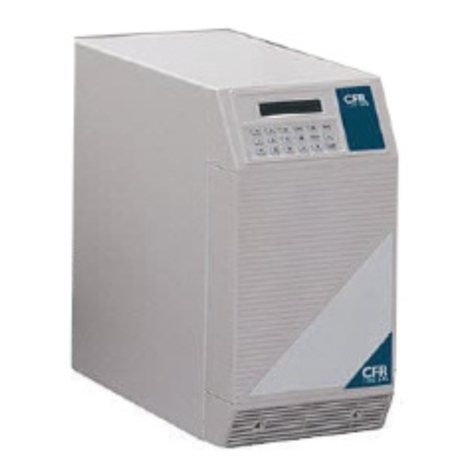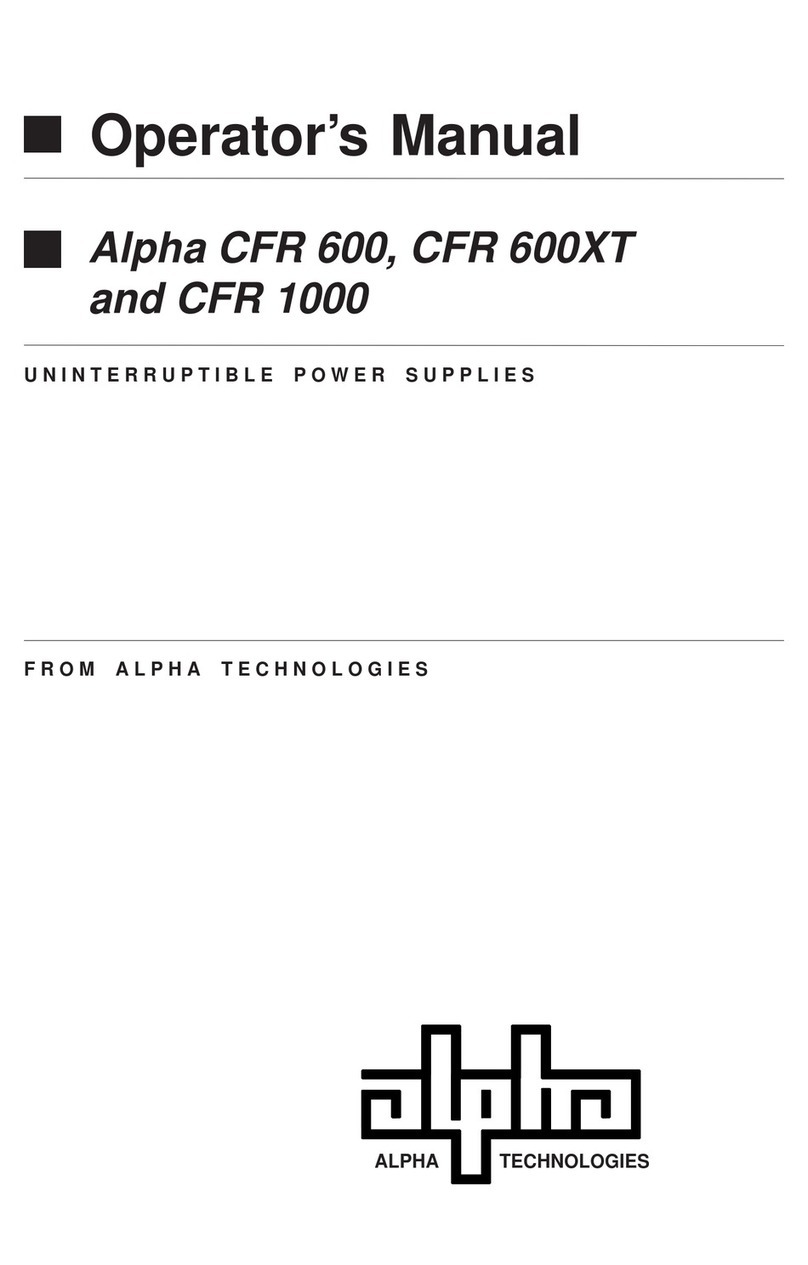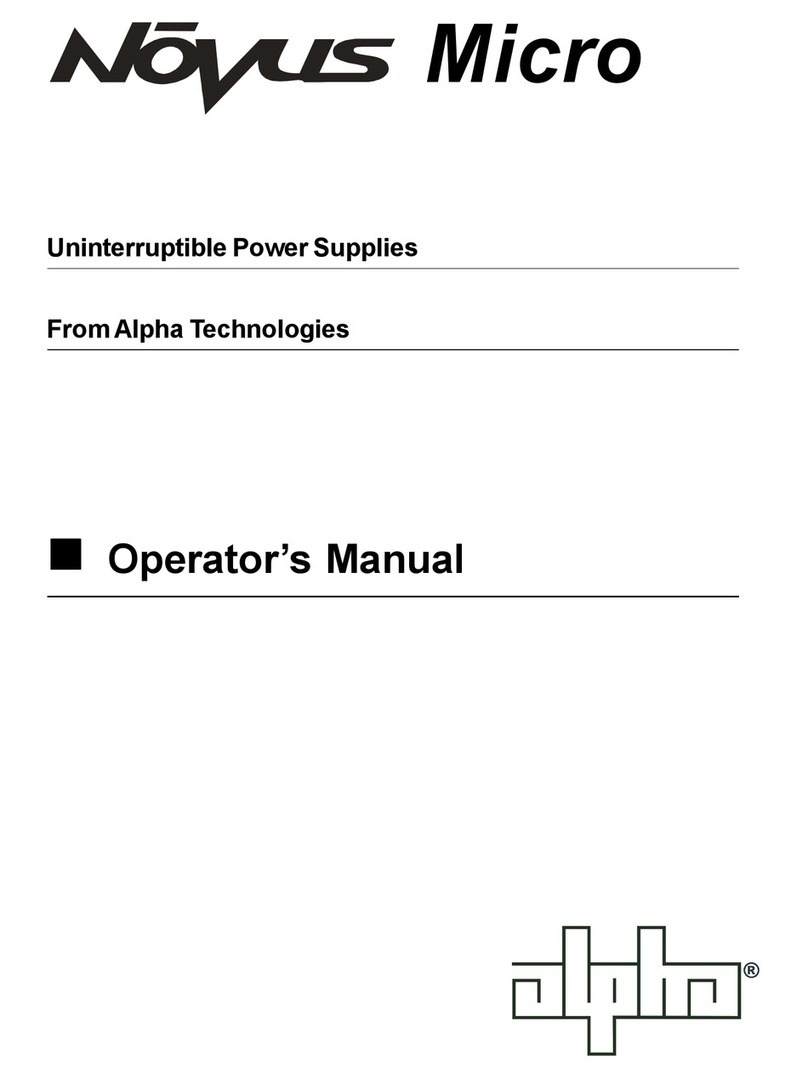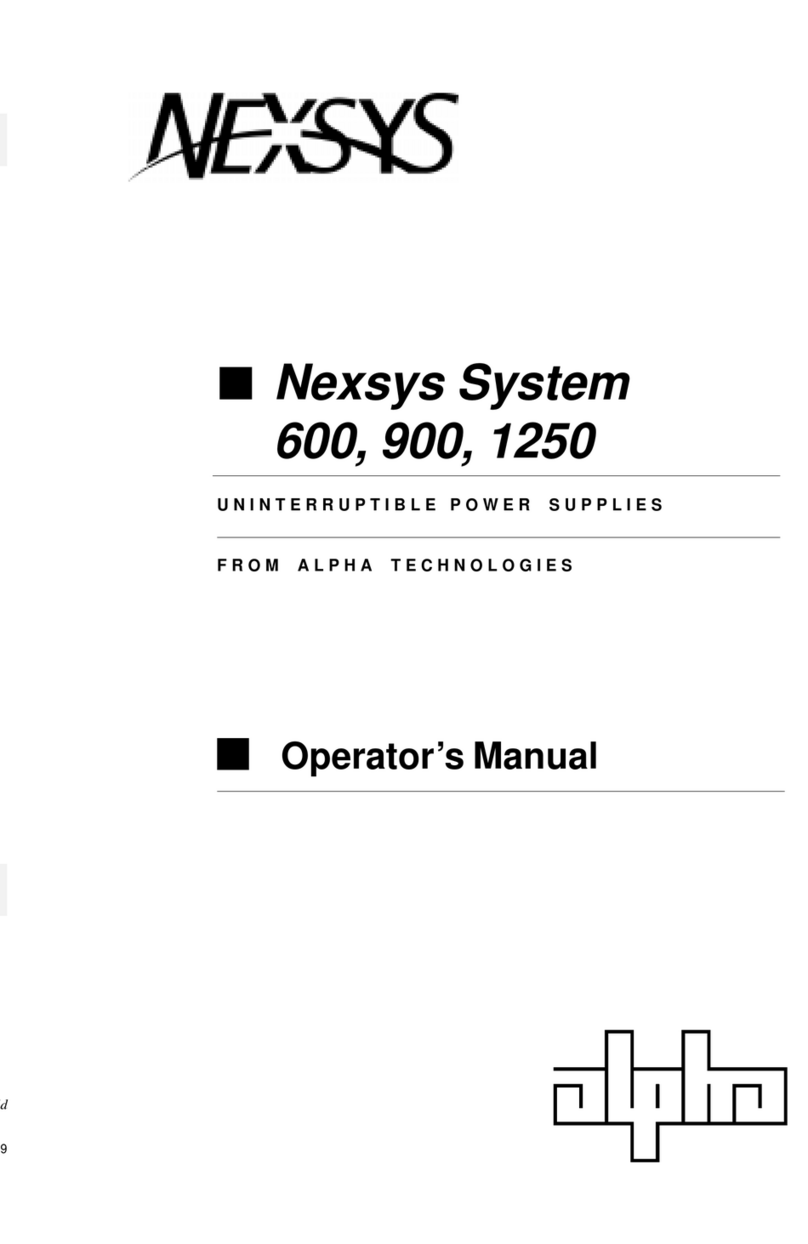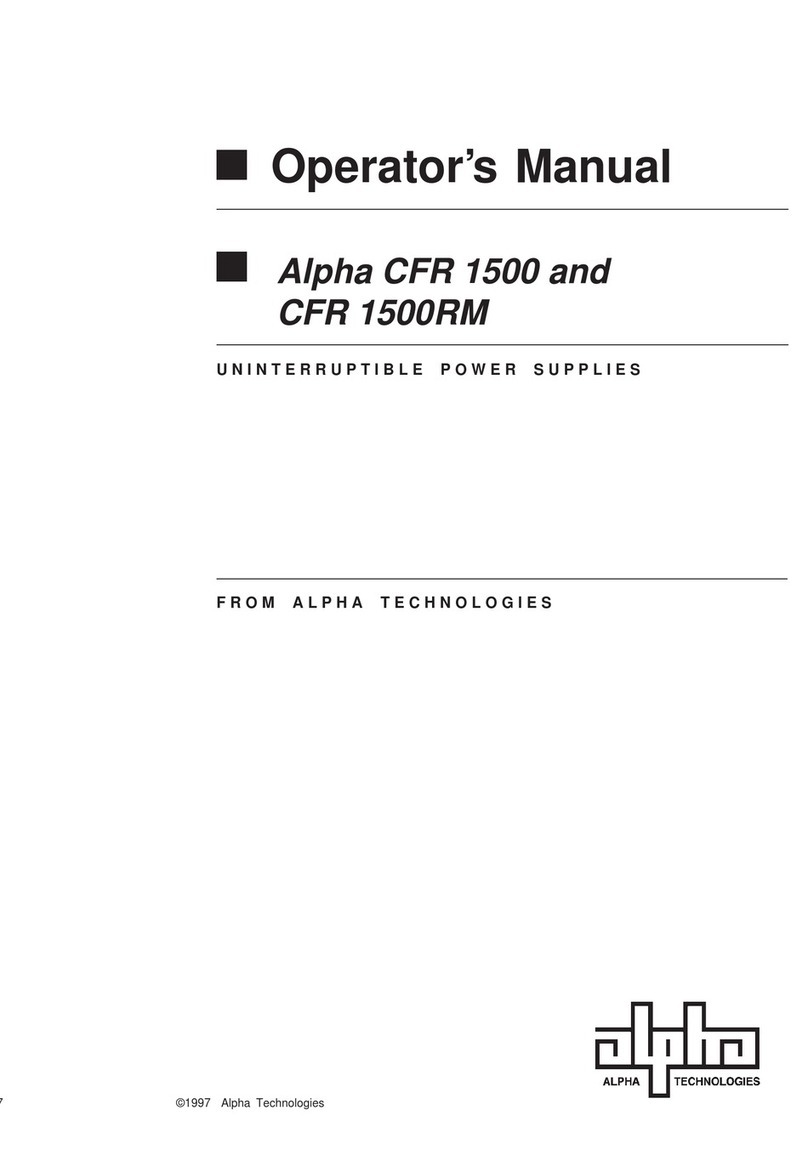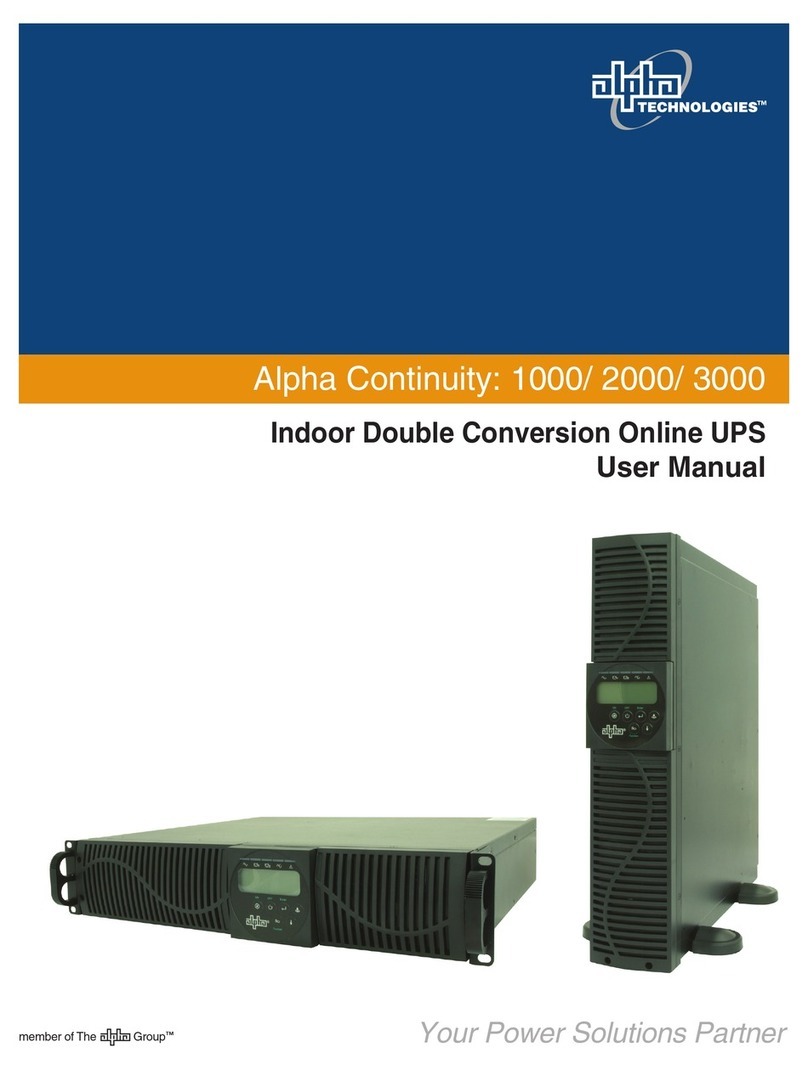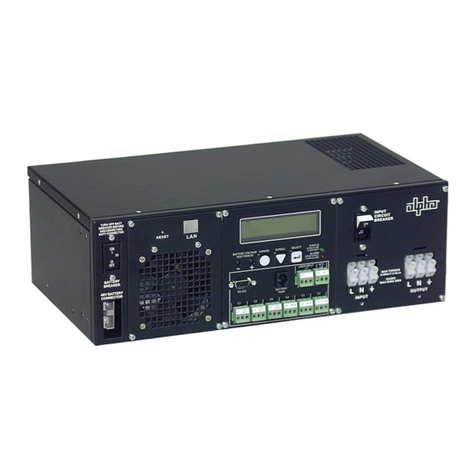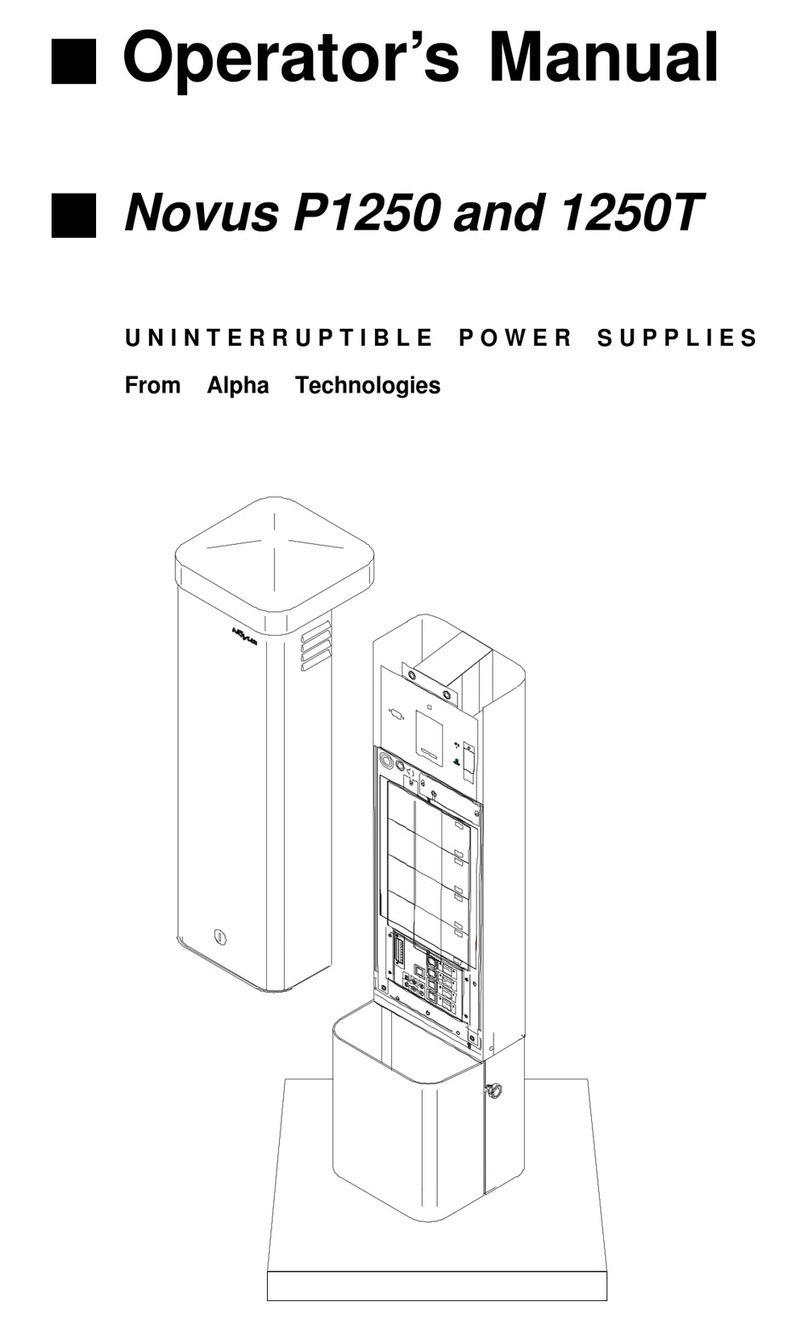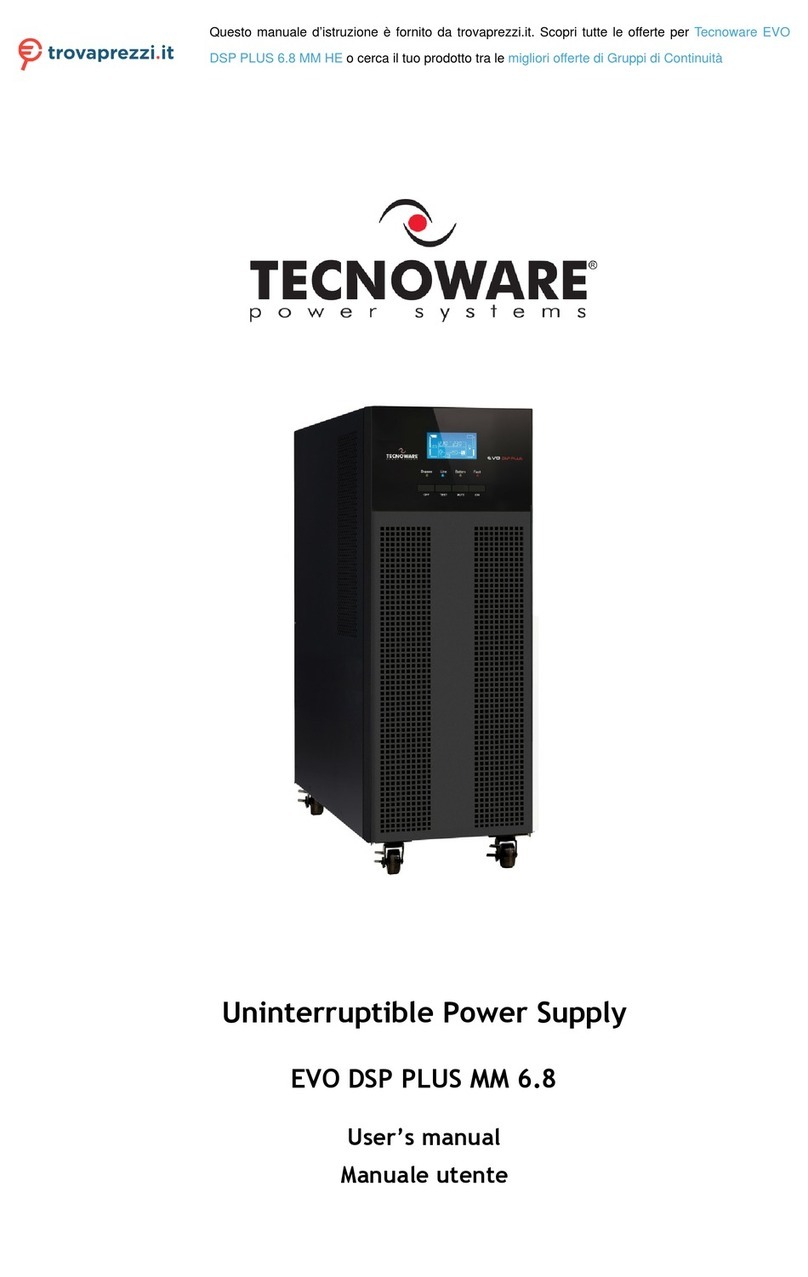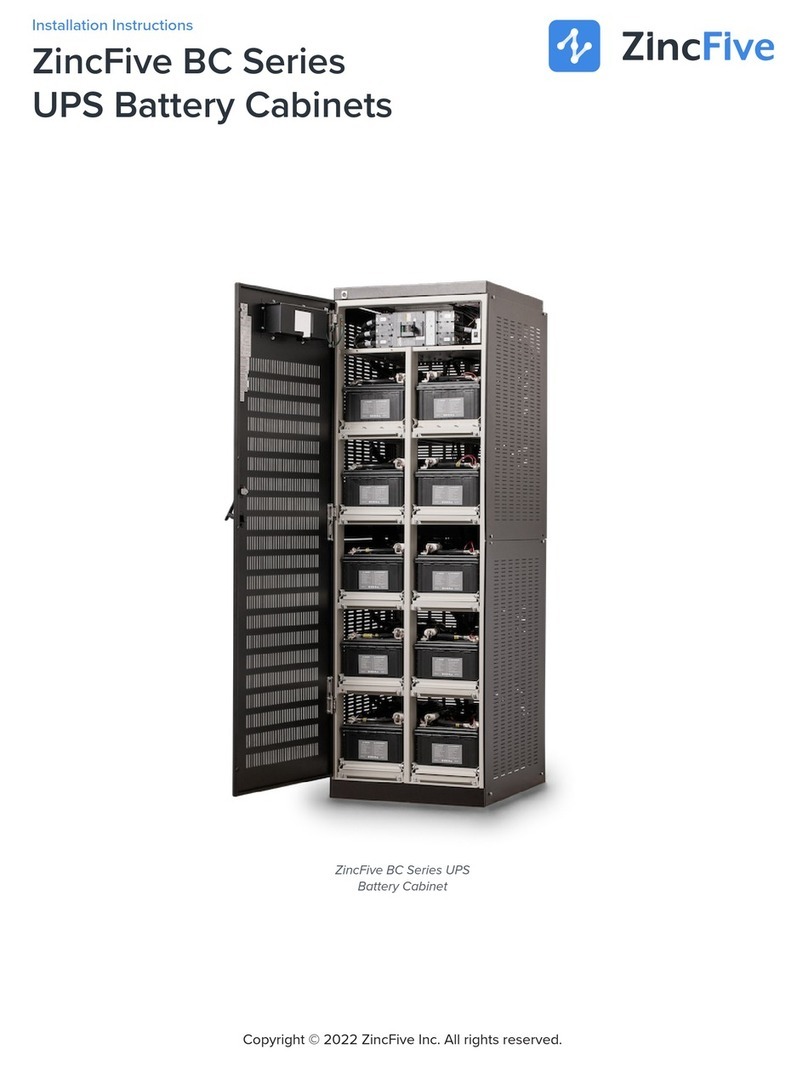
HIMOD_HP_MANUAL_vers0116_E
- 3 -
INTRODUCTION
Thank you for choosing our product.
Alpha Technologies is specialised in the design, development and manufacture of Uninterruptible Power Supplies (UPS).
The UPS described in this manual is a high quality product, carefully designed and manufactured to guarantee the best
performance.
This manual provides detailed instructions for use and installation of the product.
For information about using and to get the maximum performance from your UPS, this manual should be carefully kept
near the UPS and READ IT BEFORE ANY OPERATION ON IT.
NOTE: Some of the images in this document are provided as a guideline only, and they may not accurately reproduce the depicted
product components.
SAFETY PRECAUTIONS
Read the specific safety manual before any operation on the HIMOD HP UPS System.
ENVIRONMENTAL PROTECTION
While developing its products, Alpha Technologies spends great efforts in analysing environmental issues. All our products seek
the objectives defined by the policies of the environmental management system, developed by the company according to the
current legislation.
No harmful material such as CFC, HCFC or asbestos can be found in this product.
The packaging is made of RECYCLABLE MATERIAL. Please dispose of the individual elements according to the current legislation
in force in the country where the product is to be employed. Please refer to the following table for identifying the materials:
DESCRIPTION MATERIAL
Pallet Wood
(FOR)
Packaging box Corrugated cardboard
(PAP)
Protective bag High Density
Polyethylene (PE-HD)
Adhesive buffers Low Density Polyethylene
(PE-LD)
Bubble Cushioning Wrap
DISPOSAL OF THE PRODUCT
The UPS contains materials which (in case of decommissioning/disposal) are considered TOXIC and DANGEROUS WASTE, for
example circuit boards and batteries. Treat such material according to the current legislation by using licensed centres. Their
correct disposal helps to protect the environment and human health.
© The reproduction of any part of this manual, even if partial, is forbidden unless authorised by Alpha Technologies. For improvement
purposes, Alpha Technologies reserves the right to modify in any moment and without any previous notice the product described in this
document.
